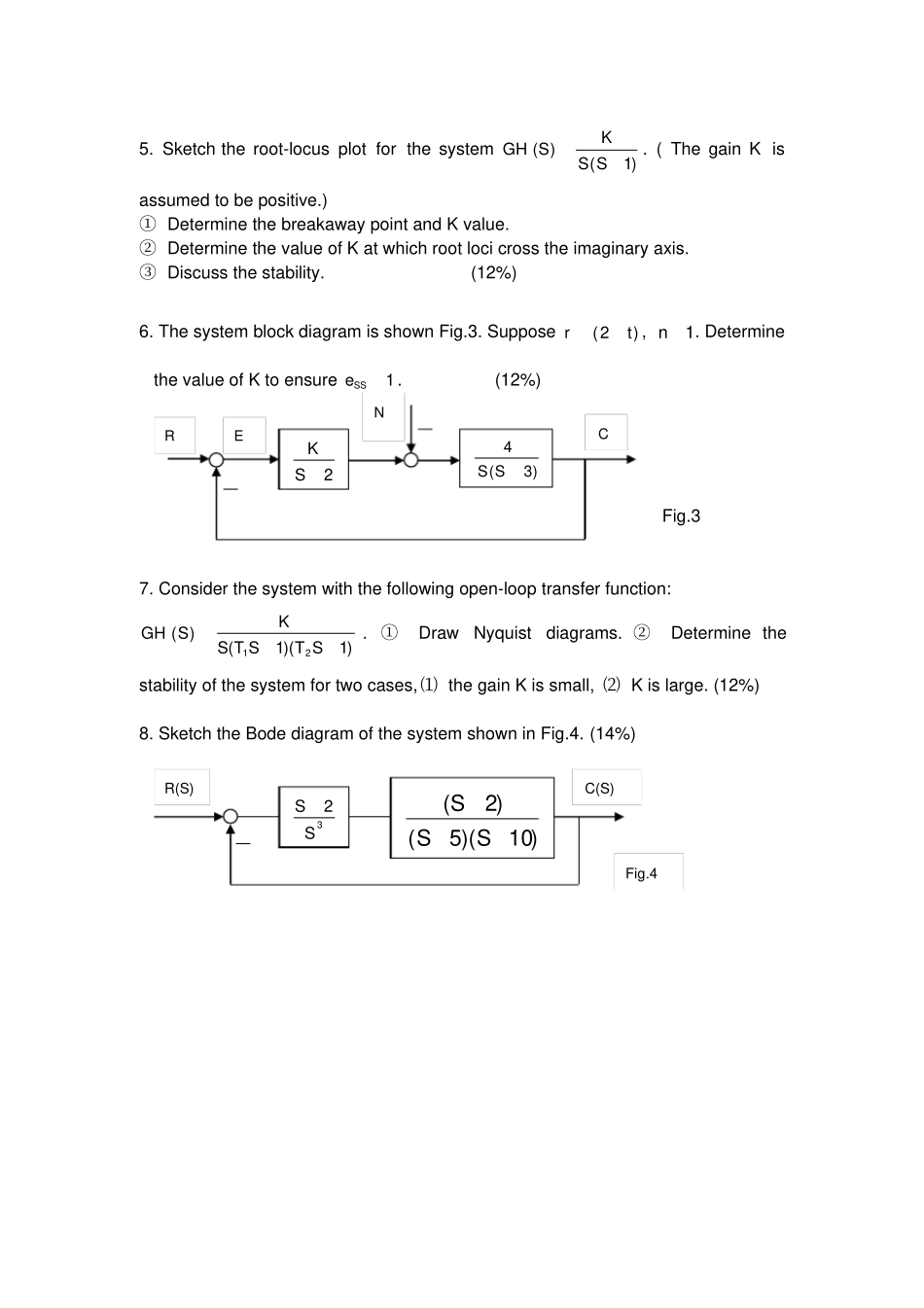AUTOMATIC CONTROL THEOREM (1) ⒈ Derive the transfer function and the differential equation of the electric network shown in Fig.1. (12% ) ⒉Consider the system shown in Fig.2. Obtain the closed-loop transfer function)()(SRSC, )()(SRSE. (12%)Fig.2 ⒊ The characteristic equation is given 010)6(5)(123KSKSSSGH. Discuss the distribution of the closed-loop poles. (16%) ① There are 3 roots on the LHP ② There are 2 roots on the LHP ② There are 1 roots on the LHP ④ There are no roots on the LHP . K=? ⒋ Consider a unity-feedback control system whose open-loop transfer function is )6.0(14.0)(SSSSG. Obtain the response to a unit-step input. What is the rise time for this system? What is the maximum overshoot? (10%)C G1 G2 G3 G4 H2 H1 R E C2 R2 V2(S) R1 C1 V1(S) Fig.1 5. Sketch the root-locus plot for the system )1()(SSKSGH. ( The gain K is assumed to be positive.) ① Determine the breakaway point and K value. ② Determine the value of K at which root loci cross the imaginary axis. ③ Discuss the stability. (12%) 6. The system block diagram is shown Fig.3. Suppose )2(tr, 1n. Determine the value of K to ensure 1SSe. (12%) Fig.3 7. Consider the system with the following open-loop transfer function: )1)(1()(21STSTSKSGH. ①Draw Nyquist diagrams. ②Determine the stability of the system for two cases, ⑴ the gain K is small, ⑵ K is large. (12%) 8. Sketch the Bode diagram of the system shown in Fig.4. (14%) 2SK)3(4SSR E N C 32SS)10)(5()2(SSSR(S) C(S) Fig.4 ⒈212121121212)()()(CCSCCRRCSCCRSVSV⒉2423241321121413211)()(HGHGGGGGGGHGGGGGGGSRSC⒊ ① 0


